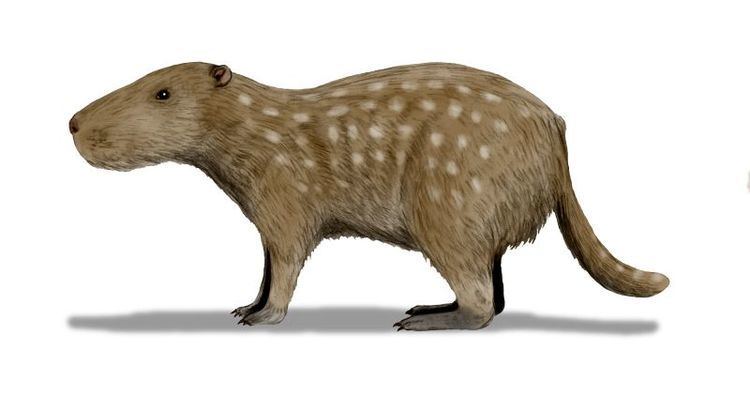Superfamily Chinchilloidea Phylum Chordata Rank Family | Scientific name Dinomyidae Higher classification Hystricognathi | |
 | ||
Similar Rodent, Mammal, Dasyproctidae, Platacanthomyidae, Octodontidae | ||
The Dinomyidae are a family of South American hystricognath rodents: the dinomyids were once a very speciose group, but now contains only a single living species, the pacarana. Several of the extinct dinomyids were among the largest rodents known to date, the bison-sized Josephoartigasia monesi and the smaller Josephoartigasia magna. The dinomyids are thought to have occupied ecological niches associated with large grazing mammals due to the lack of true ungulates in South America until its later connection to North America. The modern pacarana is only modest in size, considerably smaller than the capybara.
The Neoepiblemidae, an entirely extinct family, may actually be part of the Dinomyidae; both groups are undoubtedly closely related.
Genera
References
Dinomyidae Wikipedia(Text) CC BY-SA
